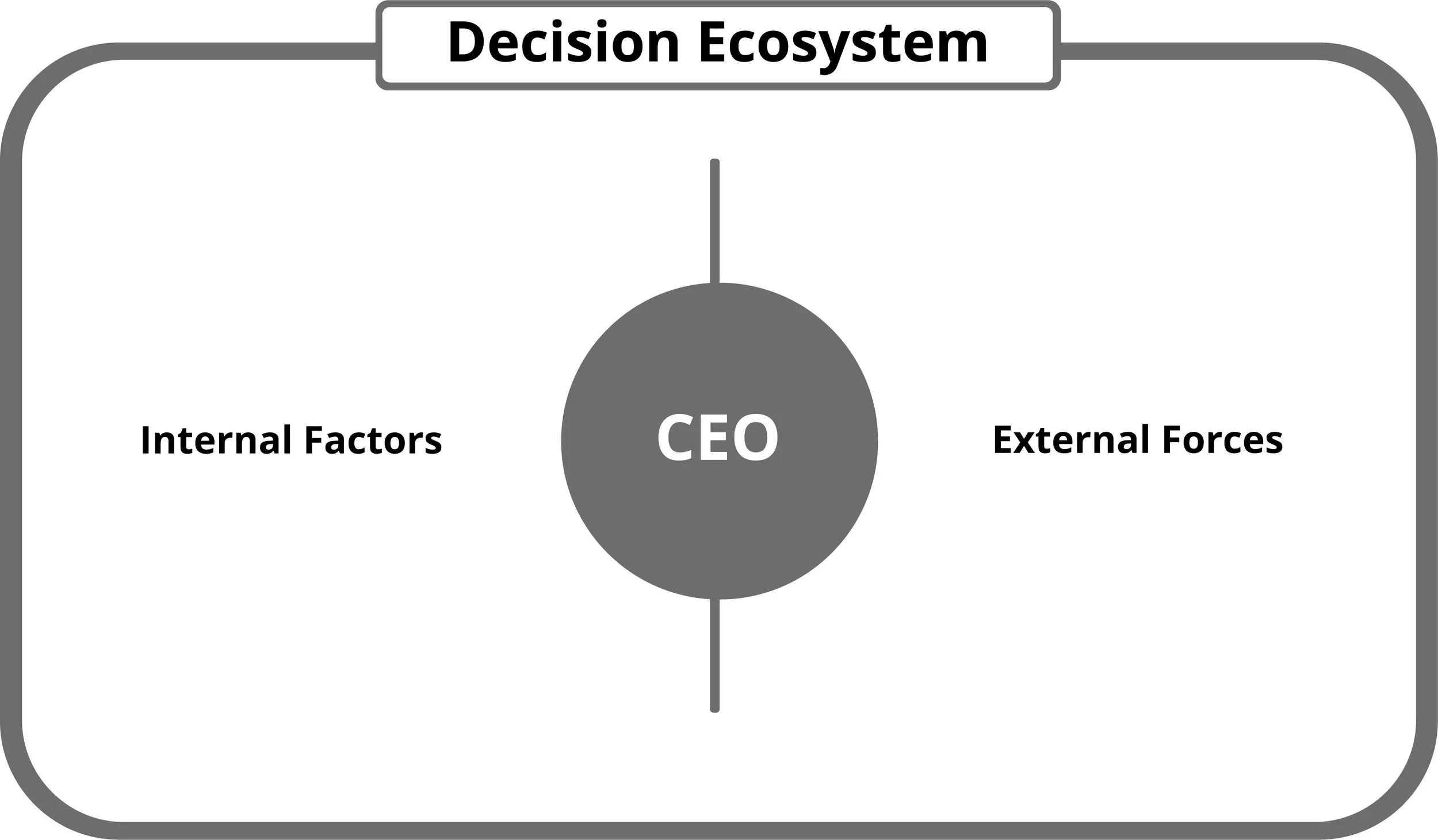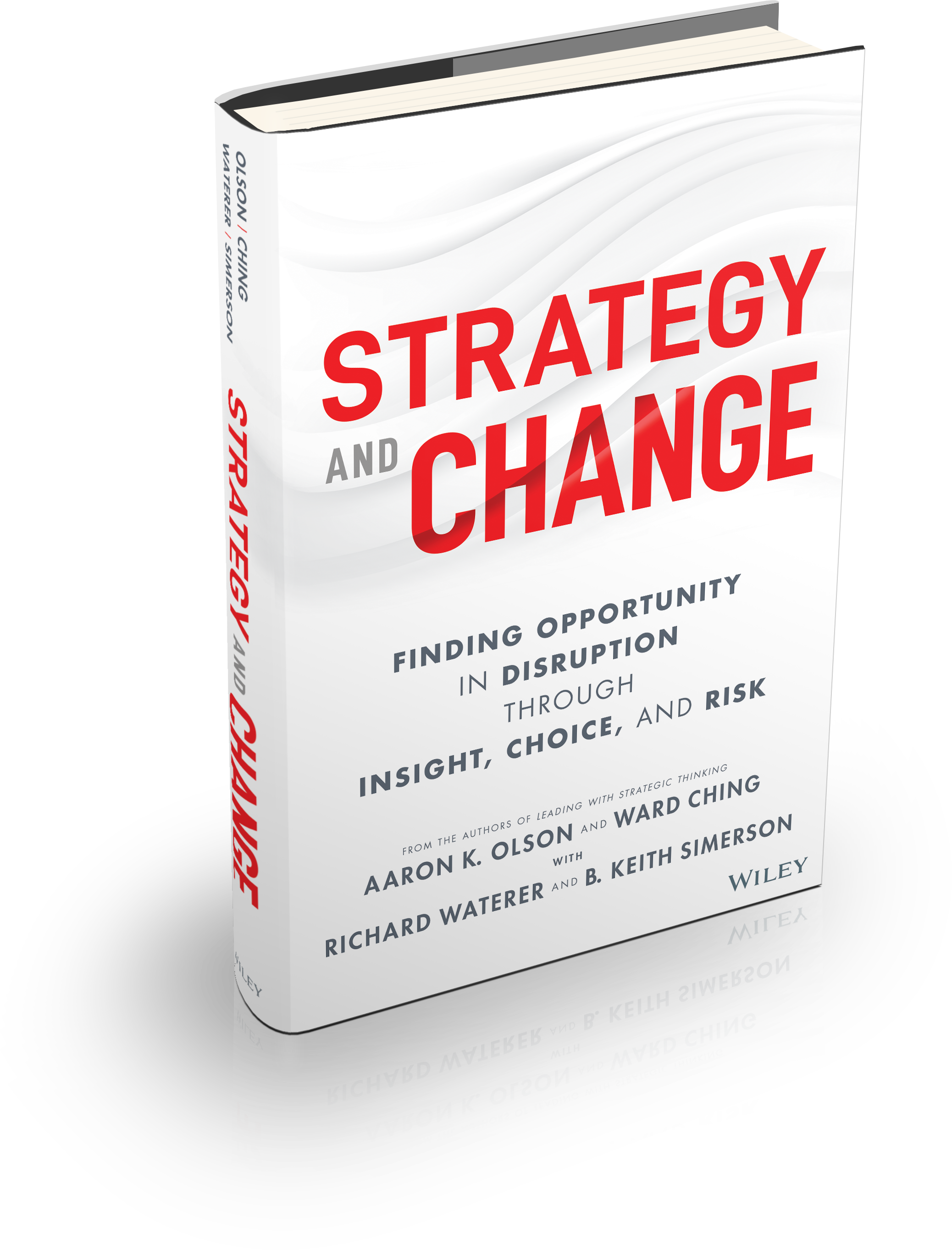The Decision Ecosystem
An excerpt from the new book Strategy and Change, coming September 2025
As we digest the implications of the last decade, we would again highlight the impact technology has had on the way organizations do business. The behaviors required for success in today’s global economy are radically different from those required in the Industrial Age or the Information Age. Pure, zero-sum competition, while still a key component of most modern economies, has been replaced by a more nuanced mixture of competition and cooperation. Single-solution corporations have increasingly been replaced by complex global organizations that interact within sophisticated commercial ecosystems, with the largest acting as the very platforms upon which those commercial ecosystems operate.
With the emergence of technologies that have a compounding effect on innovation itself, we believe these behaviors will continue to evolve. In an environment of persistent change and disruption, success 10 and 20 years from now will certainly involve different ways of operating and succeeding in the world.
Not only do new innovations introduce a challenging decision for incumbent organizations if they disrupt an existing business model, they can also introduce permanent shifts in behaviors required for success. Organizations need to monitor for disruptive innovations and anticipate how they might impact their existing business model (think, the impact of Netflix as a threat to the existence of Blockbuster) and recognize how some disruptive innovations can create basic shifts in how business is done (think the impact eBay had for small businesses looking to auction off their products).
A good example of these two challenges in practice is Amazon. Initially, Amazon was viewed by traditional retailers as a threat. Indeed, traffic and sales declined at many traditional brick-and-mortar stores as the convenience of Amazon’s service took hold across an expanding array of product categories. The largest competitors, like Walmart and Target, move quickly to invest in their own online retail operations. Smaller competitors struggle to keep pace and some, like Toys “R” Us, eventually ceased to exist. That said, the story is incomplete if we only look at Amazon through the lens of traditional competition. Six years after it first launched with a focus on books, Amazon extended its business model through the creation of Amazon Marketplace. In doing so, Amazon became a platform to help other companies sell and distribute their products via the Internet. This shift fundamentally changed the relationship between Amazon and other companies, who now had to interact with it as both a competitor and as a partner.
With this example in mind, our review highlights not one but two key shifts that disruptive innovation introduces for organizations and those who lead them:
1. Disruptive innovation can impact the viability of a core business.
2. Disruptive innovation can impact how businesses operate.
Being caught unprepared can have a range of consequences, from missing opportunities for growth to falling short of performance expectations to undermining the viability of the organization.
Taken in combination, we can see the complex decision-making environment that organizations and leaders operate in today. This complexity is a key aspect of why we chose to write this book—organizations are facing fundamental shifts in both how they decide their strategy and how they choose to activate it.
To incorporate this new consideration into our discussion, we will add a new term to our conversation—the decision ecosystem.
Figure 1.3: The Decision Ecosystem
As shown in Figure 1.3, the decision ecosystem refers to the combination of factors and forces that inform the decision making of an organization and its leadership. It is made up of two components—the internal factors that are contemplated when identifying and weighing options and the external forces that shape those considerations.
Using our Amazon example, in the first instance Amazon appeared as a competitor and behaved accordingly. They operated on the basis of a novel technology, the Internet, that was difficult for traditional competitors to match without making a significant investment that was challenging or impossible for others to make. For incumbents, that external force—new competition—was weighed against internal factors—the availability of capital. In the second instance, Amazon appeared as a partner, inviting others to sell their own goods on the Amazon platform for a percentage of the revenue drawn from each sale. For incumbents, now the external force—a new distribution channel—was weighed against different internal factors—the willingness to adapt business operations and the degree to which Amazon could be perceived as a trustworthy partner.
This brief example illustrates a key point—the decision ecosystem defines a set of internal and external considerations for a given choice at a given point in time, but those considerations can themselves change if the environment in which the organization operates is dynamic. And the world organizations operate in today is nothing if not dynamic.

